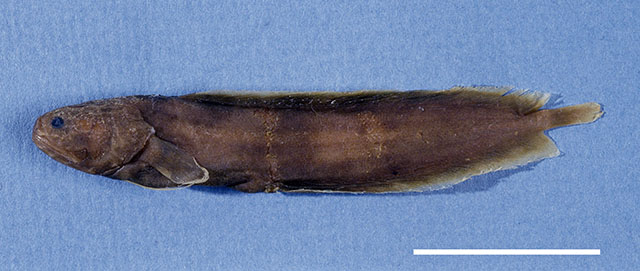| Dinematichthyidae (Viviparous brotula) |
| 7 cm SL (male/unsexed) |
|
reef-associated; marine; depth range 0 - 16 m |
| Western Central Atlantic: Bahamas, Colombia and off Puerto Rico. |
|
Dorsal soft rays (total): 75-84; Anal soft rays: 54-64; Vertebrae: 42-45. This species is characterized by the following: Vertebrae 12-13 + 29-33 = 42-45, dorsal fin rays 75-84, anal fin rays 54-64; outer pseudoclasper is wingshaped with a curved supporter anteriorly; inner pseudoclasper club-shaped, with prominent appendix inserted at posterodistal angle; a small fleshy lobe at base of hood adjacent to outer pseudoclasper; opercular spine very broad, usually 2-4 furcated in large (> 50 mm SL) specimens; scale patch on cheeks with 5-7 vertical scale rows; head and body mucus with dark brown pigment globules, especially near anal opening (Ref. 57883). |
| Inhabits coral reefs. A 62 mm SL female specimen (ANSP 115182) contained about 100 embryos (3-4 mm TL) and about 50 eggs (diameter 0.5 mm). The embryos with brown eyes, but no pigmentation on head and body is probably due to the 44 years of preservation (Ref. 57883). |
|
Least Concern (LC); Date assessed: 29 January 2013 Ref. (130435)
|
| harmless |
Source and more info: www.fishbase.org. For personal, classroom, and other internal use only. Not for publication.
